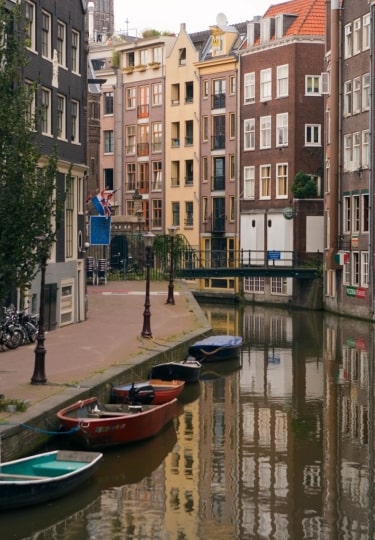What is Amsterdam known for? The Dutch capital is one of Europe’s greatest; a thriving city with a deep artistic heritage, an elaborate system of canals, some incredible architecture, and a vibe like no other.
Originally a small fishing village at the mouth of the Amstel River, Amsterdam grew to become a thriving trading port during the Dutch Golden Age of the 17th century when the Netherlands became a world power.
That era of prosperity shaped the city we see today: a modern-day melting pot of high art and liberal values, where people from around the world receive the warmest of welcomes.
Jordaan
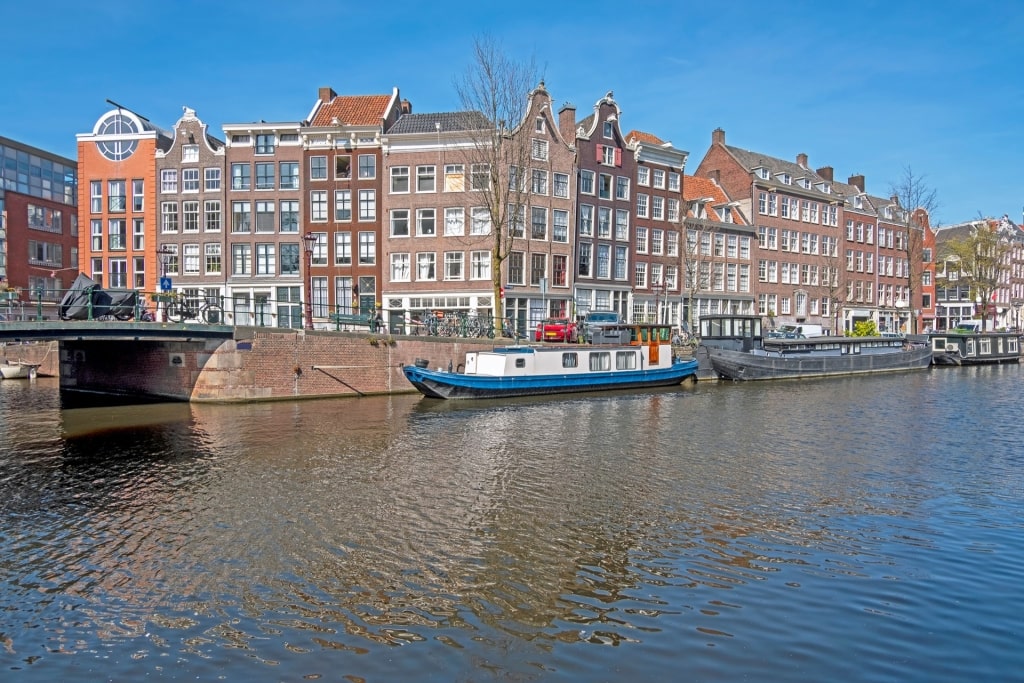
Jordaan
Built during 17th-century expansion of the city, Jordaan was originally a working-class district designed to house migrants such as French Hugenots, protestant Flemings, and Portuguese Jews. A packed ghetto with open sewers and no running water until the early 20th century, it is now one of the places Amsterdam is most famous for.
Gentrification followed huge regeneration projects and Jordaan is now as hip as Amsterdam gets with art galleries, boutiques, and cool bars and cafés. It’s also home to the Amsterdam Cheese Museum and the Houseboat Museum.
Read: Best Things to Do in Jordaan, Amsterdam
Canal Ring
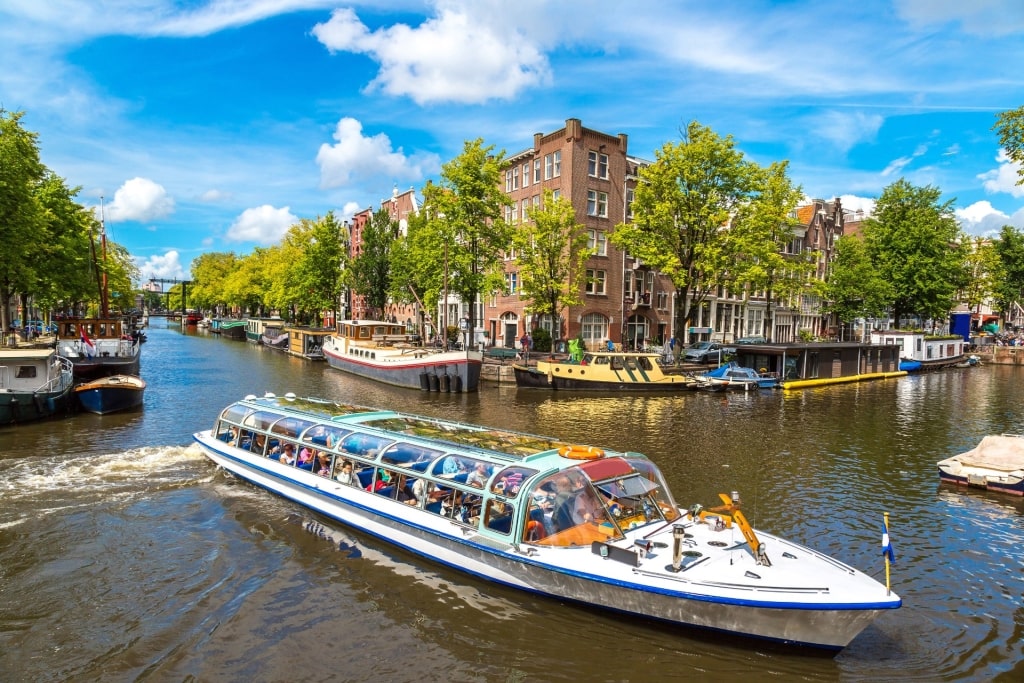
Canal Ring
One of the things Amsterdam is known for is its canals—a case of a necessity fueling huge growth. The beautiful city sits below sea level and the canals were originally built as a way to manage water levels.
But they ended up becoming the transport network that aided the 17th-century Dutch Golden Age that saw Amsterdam become an incredibly affluent trading port.
At the heart of this vast waterway is the iconic Canal Ring, known locally as the “Grachtengordel”. A series of concentric canals that form a semi-circular belt around the old city center, they are now a Unesco World Heritage site and are lined by more than 1,500 historically significant buildings.
Look out at the intersection of the Reguliersgracht and Herengracht canals where you can spot seven bridges in a row—a classic spot for photographing one of Europe’s most famous attractions.
Anne Frank House
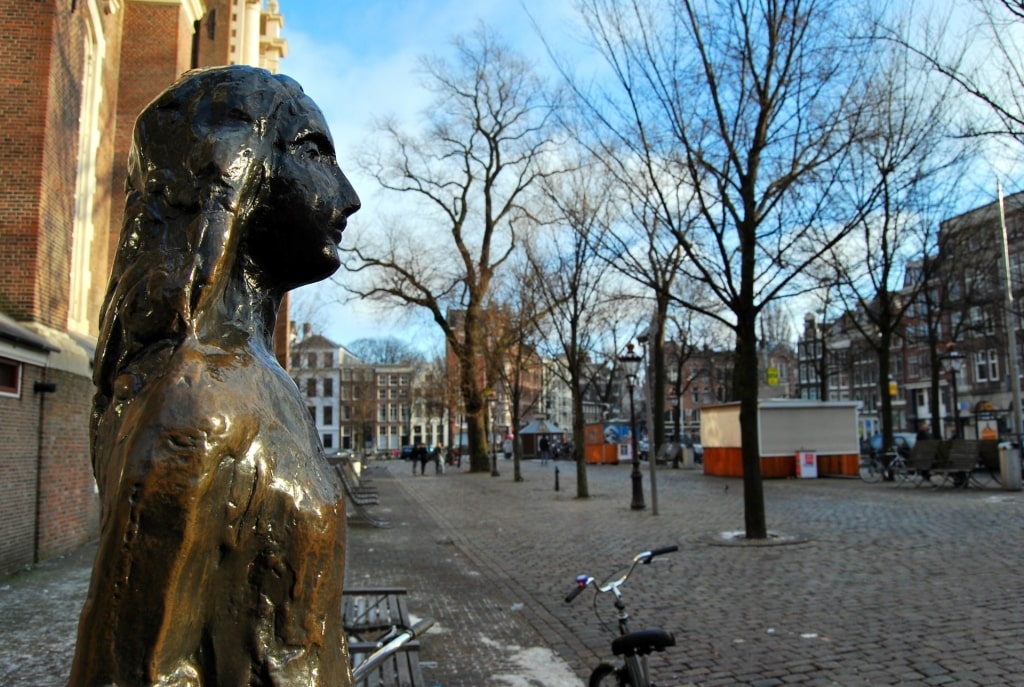
Anne Frank House
Set by the Prinsengracht canal in the heart of the Canal Ring is a small townhouse with a big history. Modest 263-267 Prinsengracht was the home of Anne Frank, the Jewish teen who kept a diary of the atrocities her family were facing when the Netherlands was under Nazi rule in World War II.
Now a museum in her honor, it shows where she lived in hiding with her family and four others. One of the Dutch capital’s most visited attractions, it offers a moving experience that brings history to life in a highly personalized and powerful way.
Dam Square
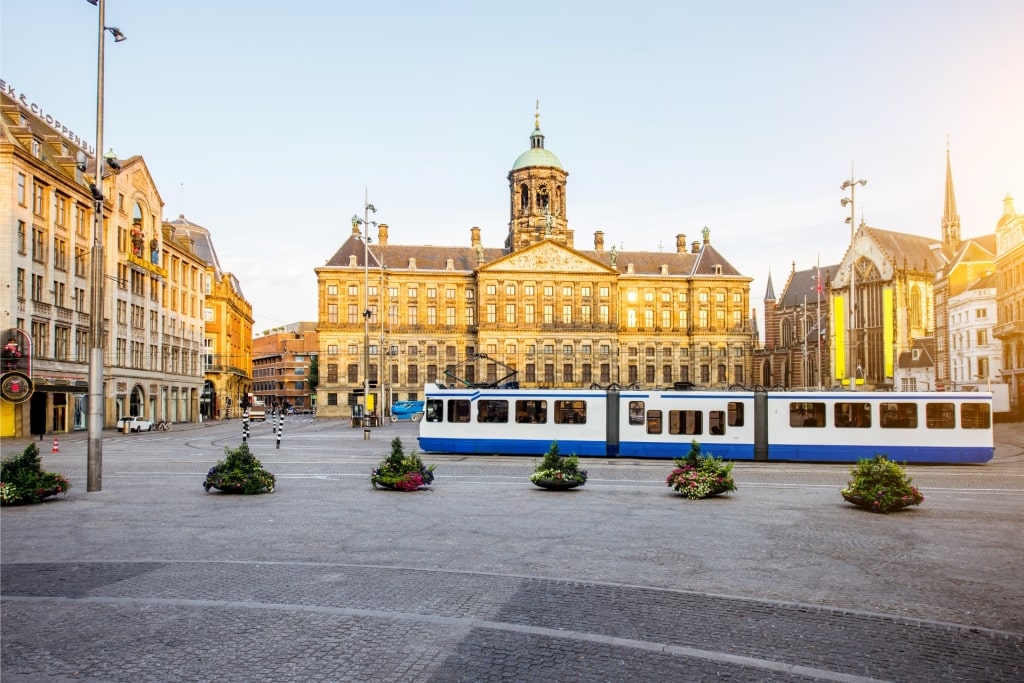
Dam Square
Taking its name from a 13th-century dam that was built to stop flooding, medieval Dam Square is the center of Amsterdam and its beating heart. Home to the Royal Palace, the Nieuwe Kerk with its huge pipe organ and intricate carvings, and the 1956 National Monument to World War II victims, it’s a lively gathering place.
The square hosts many events, markets, and street performances, while the surrounding streets include Kalverstraat, one of Amsterdam’s busiest shopping streets, as well as the Bijenkorf, a luxury department store.
Ajax Amsterdam
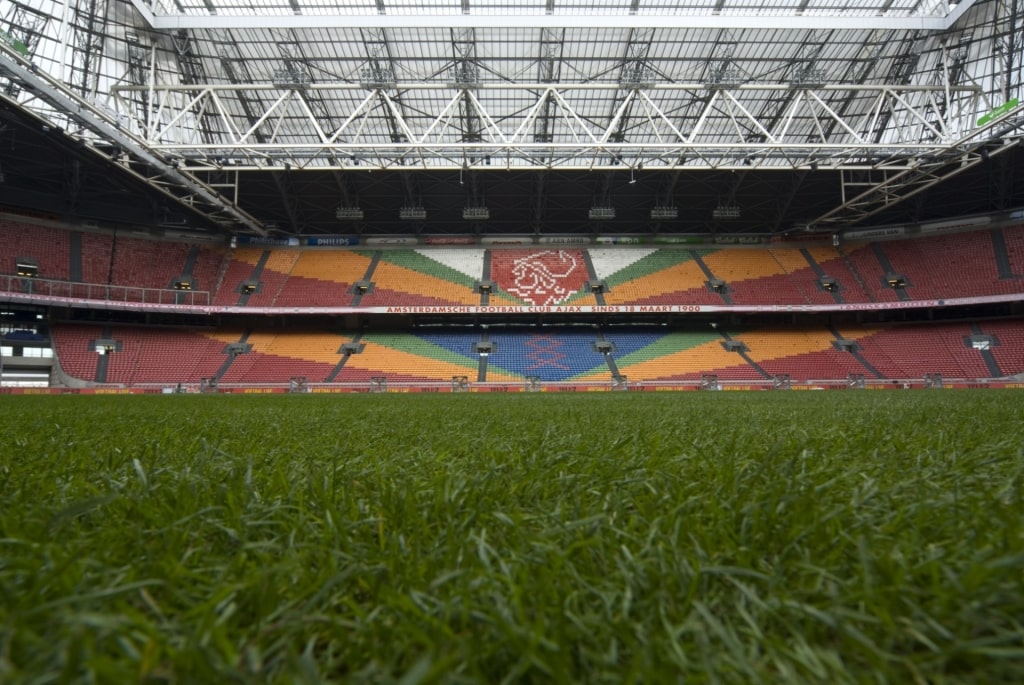
Johan Cruyff Arena
Amsterdamsche Football Club Ajax—known as Ajax Amsterdam—are not only one of the things Amsterdam is famous for, but also one of the most successful and well-known soccer clubs in the world.
Founder of the fast-flowing “Total Football” philosophy and home to an incredible youth academy, Ajax has won numerous national and European titles over the years at its home the Johan Cruyff Arena. Supporting Ajax is akin to religion here, with the team being a symbol of both sporting excellence and the city’s pride.
Even if not attending a match, there are stadium tours that include access to the locker rooms, pitch, and the club museum. There’s also an Ajax Fanshop for picking up merchandise, from the club’s jerseys to various memorabilia.
Van Gogh Museum
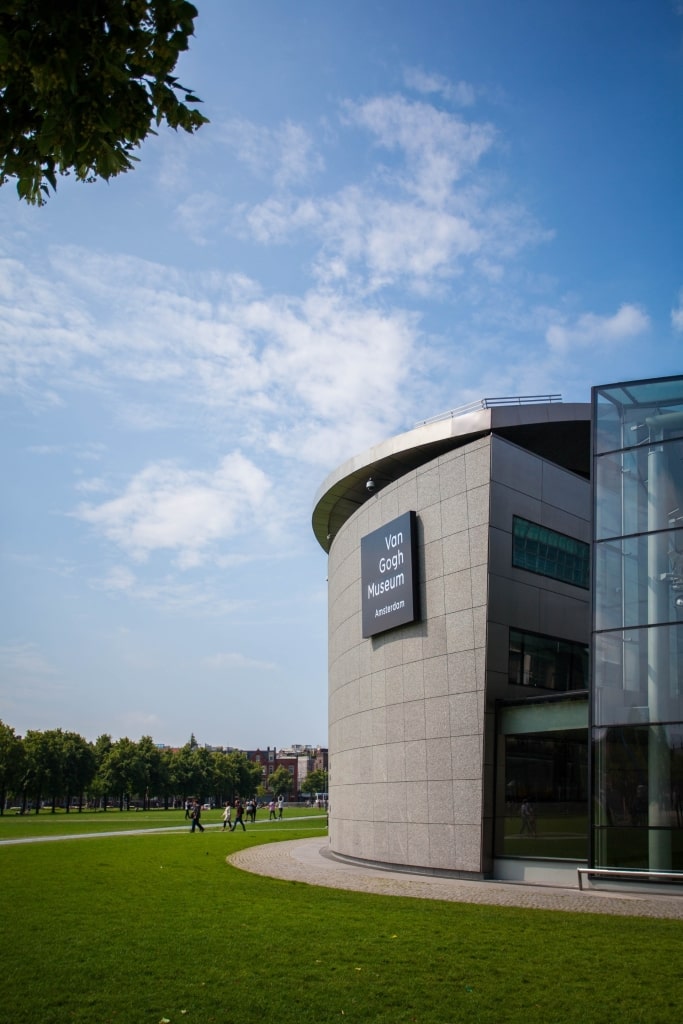
Van Gogh Museum
When it comes to the question “What is Amsterdam known for?”, right at the top of the list comes Museumplein, Amsterdam’s museum district.
Originally a wax candle factory surrounded by marshy meadows, the district is home to some of the world’s best museums, including the Van Gogh Museum, dedicated to one of the city’s most famous sons, Vincent Van Gogh.
Opened in 1973, this art museum houses the largest collection of Van Gogh’s paintings and drawings in the world, along with works by many of his contemporaries and those influenced by him.
It takes an in-depth look at Van Gogh’s evolution as an artist, as well as his personal struggles with mental health, and the impact of his work throughout the world. Key highlights include iconic pieces such as Sunflowers, The Bedroom, and Almond Blossom.
The Heineken Experience

The Heineken Experience
Ask a beer drinker “What is Amsterdam famous for?” and their answer will surely include Heineken, one of the most recognizable beer brands in the world, available in almost 20 countries.
Heineken was founded in Amsterdam in 1864 and the best way to find out more about this iconic brand is to visit The Heineken Experience, located in the original Heineken brewery, just south of the city center at Stadhouderskade 78 in the De Pijp district. A visit includes an interactive brewery tour where visitors get to see old brewing equipment, learn about the ingredients used, and even pour their own perfect pint.
The tour ends with a tasting session in the modern bar area but it can be extended with a canal cruise. VIP tours, available at a premium, offer a more exclusive experience with private guides, a five-beer tasting with local cheeses, and access to areas normally considered off-limits.
The Nine Streets
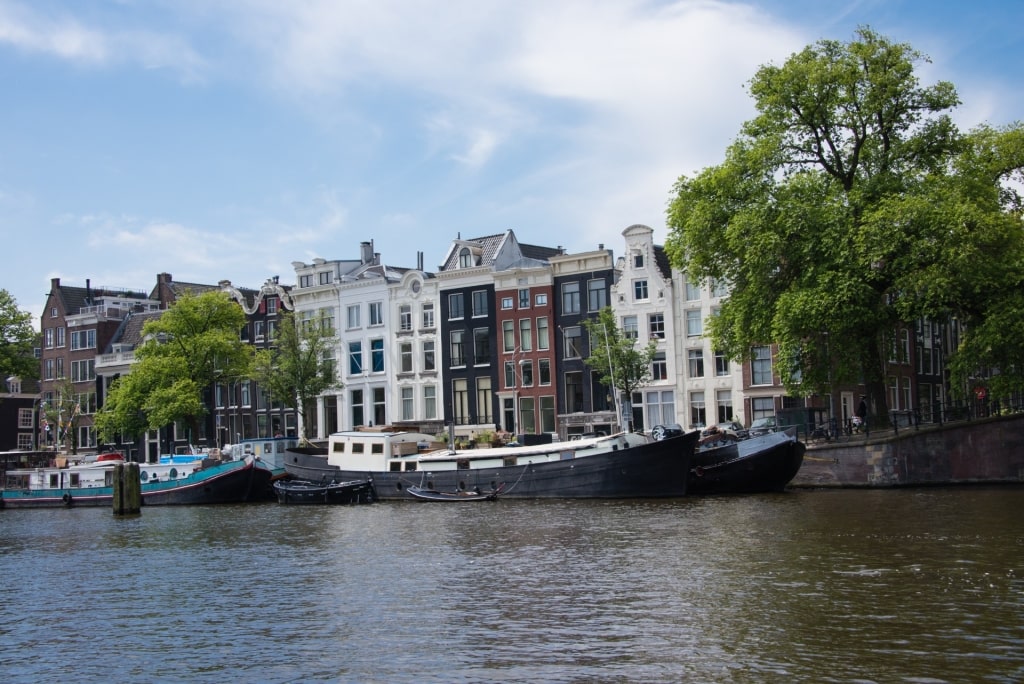
Nine Streets
At the very center of Amsterdam lies one of its most famed districts, the charming and picturesque Nine Streets, or De 9 Straatjes.
A series of interconnected streets spanning the three main canals, this is an area packed with an eclectic mix of shops and restaurants. It’s a perfect place to pick up designer gear, pre-loved vintage clothing, and one-off pieces of art, as well as to indulge in a bit of people-watching in one of the cafés or restaurants.
Avert your gaze from the windows of the lovely shops and look upwards and you’ll see why it’s also one of the prettiest neighborhoods in Amsterdam, as many of the buildings here date from the 17th century.
Look out for some of the area’s gems: Café ‘t Spui-tje on the corner of Spuistraat and Elandsgracht serves some of the best coffee in town, while Winkel 43, famous for its apple pie, is tucked away on Noordermarkt, just outside the Nine Streets.
Dutch Masters
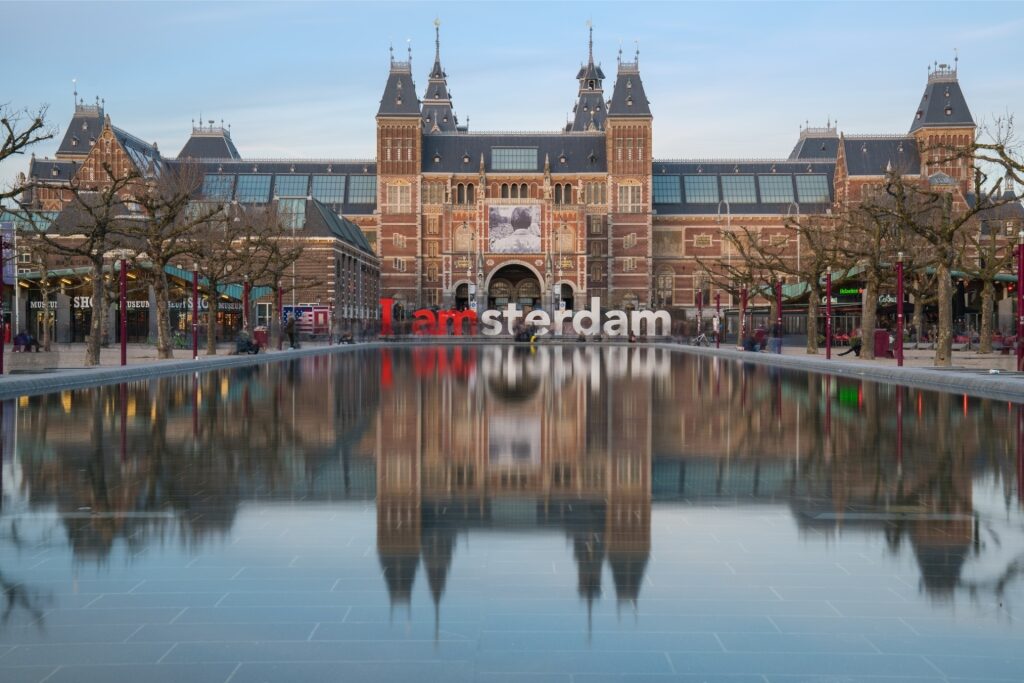
Rijksmuseum
Amsterdam is one of the world’s best cities for art. While Van Gogh may immediately spring to mind when Dutch art is mentioned, he wasn’t the only master in the country’s vast artistic palette. To see examples from the Golden Age of Dutch painting, head to the Rijksmuseum, close to the Van Gogh Museum on Museumplein.
Here you’ll find works by Rembrandt, Vermeer, Frans Hals, and many others. Be sure to get there early for the Rembrandts, as the queues for the Night Watch in particular can be quite long.
The museum is also dedicated to Dutch history and there’s lots to see outside of the works of the Masters. Check out the collection of Asian art in the Philips Wing, as well as beautifully sculptured gardens, the vast Cuypers Library, and Michelin-starred dining at the upscale Rijks restaurant.
The Royal Palace of Amsterdam
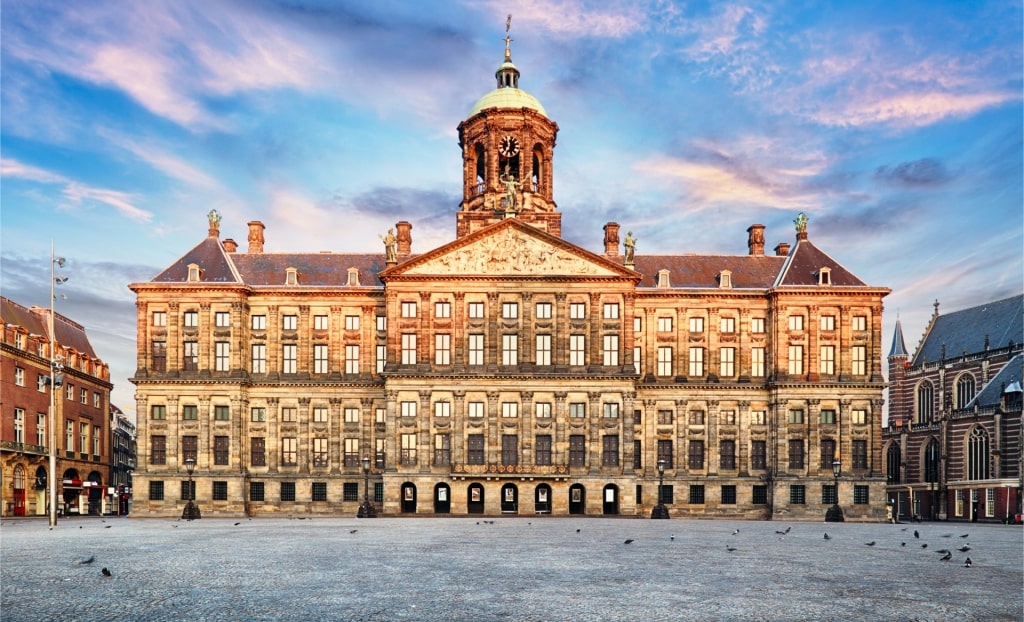
Royal Palace of Amsterdam
Known in Dutch as the Koninklijk Paleis, the Royal Palace is one of three Royal residences in the Netherlands—but it was not always this way. The elegant Dam Square building was actually constructed in the Dutch Golden Age as the city hall but was converted into a royal residence by Louis Napoleon, the brother of Napoleon Bonaparte, during the early 19th century.
Today it’s used for official functions and royal events, but is also open for public viewing when not in use by the royals themselves. While many simply marvel at the ornate exterior, which includes an 18 foot-tall statue of Atlas carrying the Globe on his shoulders at the rear, it’s well worth taking the time to look inside.
Highlights of a tour include the Civic Hall with its marble sculptures and stunning ceiling art, and the elegant Royal Apartments with period furniture, paintings, and tapestries.
The Stedelijk Museum
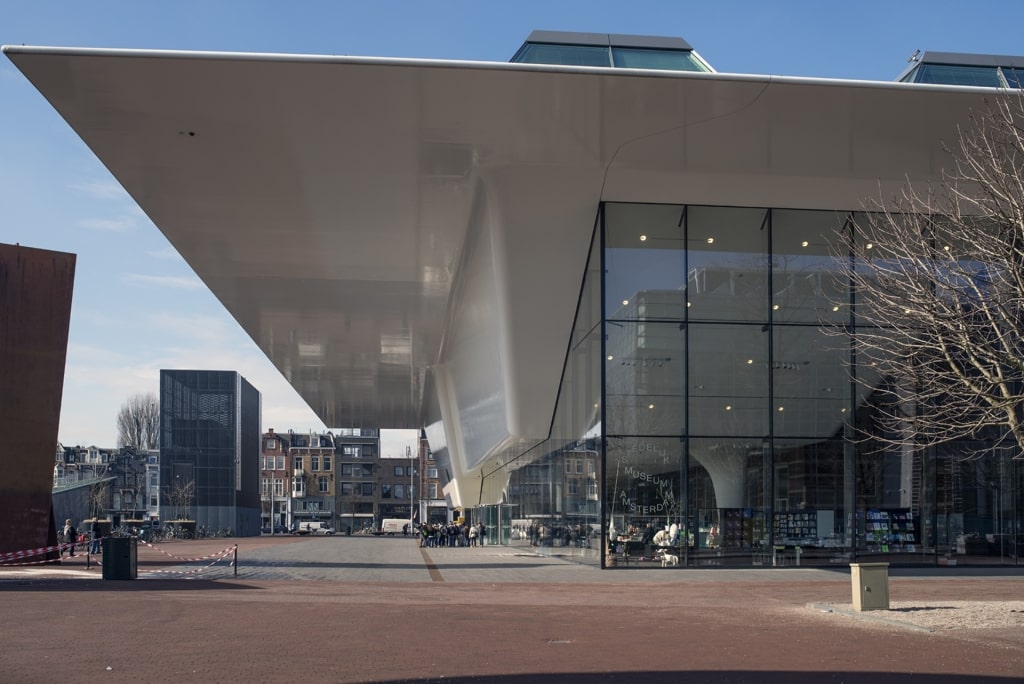
Stedelijk Museum Photo by Hpschaefer on Wikimedia Commons, licensed under CC BY-SA 3.0
When it comes to art, there’s no doubt that Amsterdam is mainly known for the works of the Grand Masters, but Museumplein’s third museum offering is yet another fabulous city gem.
Founded in 1874, the museum is dedicated to more contemporary art and design, including a wide range of movements from the late 19th century to the present day. These include Impressionism, Fauvism, Cubism, and Minimalism, while there are also sections dedicated to graphic design, industrial design, and applied arts.
Check out works by the likes of Piet Mondrian, Andy Warhol, and Jackson Pollock, and also make sure to take a good look at the museum’s exterior. The Tobacco Pavilion, the museum’s modern extension, is known as the “bathtub” thanks to its distinctive shape and sleek white design.
Street Markets

Albert Cuyp Market
With many of them originating in the 18th and 19th centuries, paying a visit to Amsterdam’s street markets is an essential part of a visit to this European capital city. Ranging from daily markets offering fresh produce, to books, arts, and clothing, they are a great place to sample life like a local, as well as to get the chance to pick up one-off souvenirs.
One of the largest and most famous street markets in the Netherlands, the Albert Cuyp Market in the De Pijp district has been a fixture since 1905, selling everything from fresh vegetables and fish to electronics. Waterlooplein Flea Market is another must-see with vintage clothing, antiques, books, and quirky curiosities.
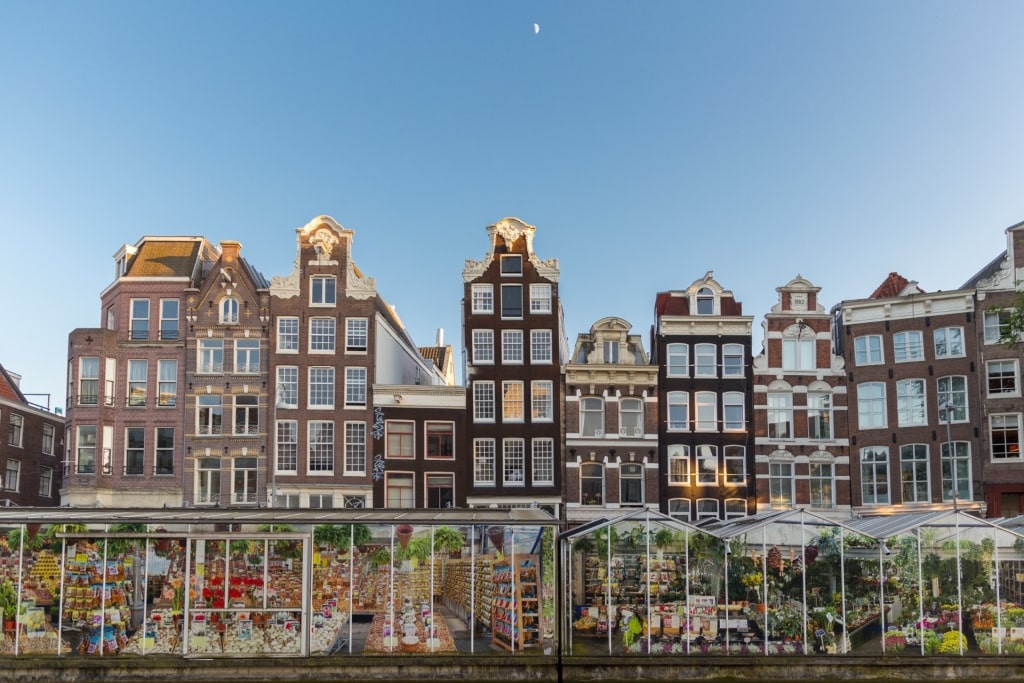
Bloemenmarkt
And don’t miss the iconic Bloemenmarkt on the Singel canal, a floating flower market where the stalls are set on barges. With this being the Netherlands, tulips are a star attraction here, answering the question “what is Amsterdam known for?” with two examples in one.
Read: What Are the Netherlands Known For?
The Oude Kerk
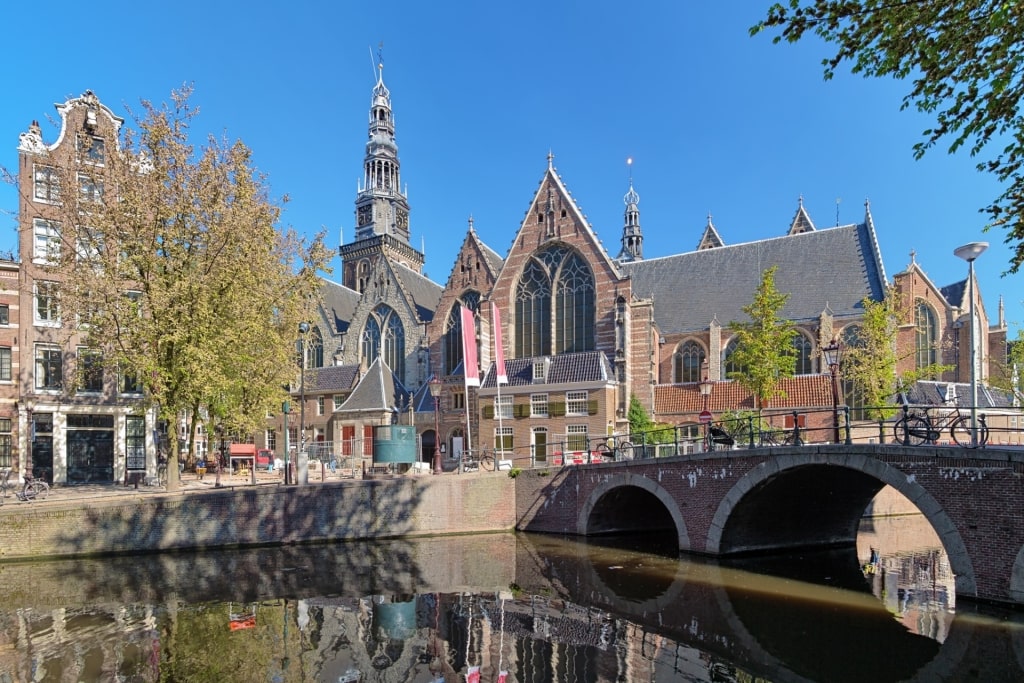
Oude Kerk
Like a beacon of virtue, the Oude Kerk sits right in the center of Amsterdam’s Red Light District.
Said to be the city’s oldest building, it dates from 1213 and was originally a Catholic church before becoming Protestant during the Reformation of the 16th century. Containing elements of Gothic and Renaissance architectural styles, it now acts as both a place of worship and a venue for art exhibitions, concerts, and cultural events.
As well as the chance to worship, marvel at the incredible stained-glass windows, and see some great works of art in one space, it’s also worth climbing to the top of the Bell Tower. Summiting the 220 steps requires some effort, but that’s rewarded with great views over the historic city center.
Vondelpark
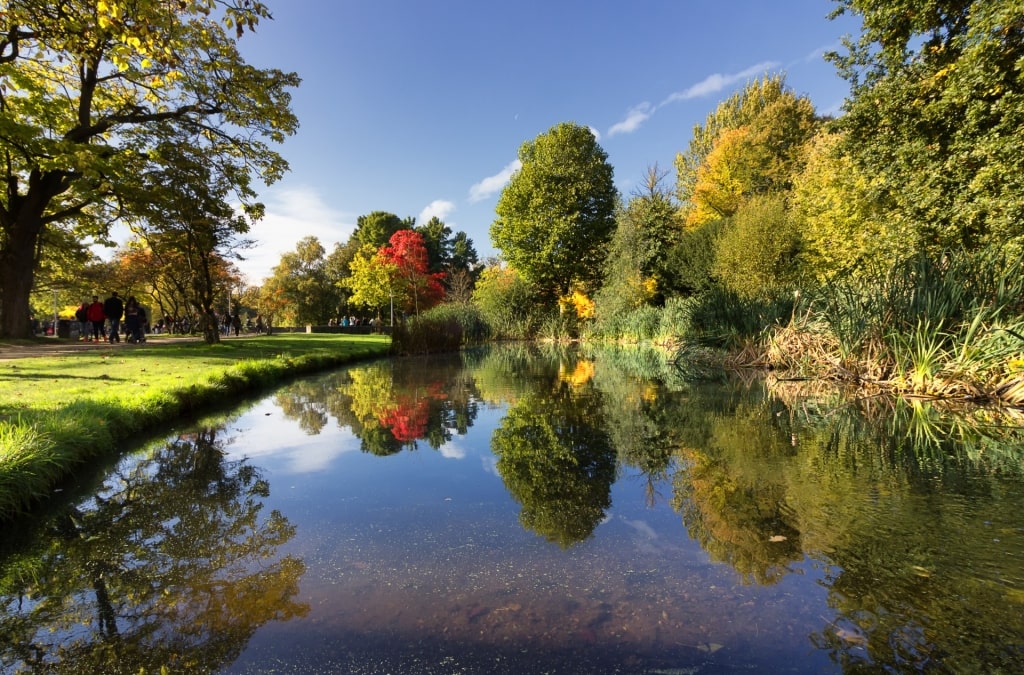
Vondelpark
While the weather in Northern Europe is seldom tropical, getting out and about is an essential part of the culture in Amsterdam, as witnessed by the locals’ propensity to travel most places by bicycle.
One of the city’s most-loved open spaces is Vondelpark, a 120-acre central park named after the 17th-century Dutch playwright and poet Joost van den Vondel.
The park is immaculately landscaped with serene ponds, winding paths, and vibrant flower gardens—making it a great spot to experience Amsterdam for kids. There are picnic spots, a café, an open-air theater, and cycle hire for those wishing to explore the city like a native.
Liberal Attitudes
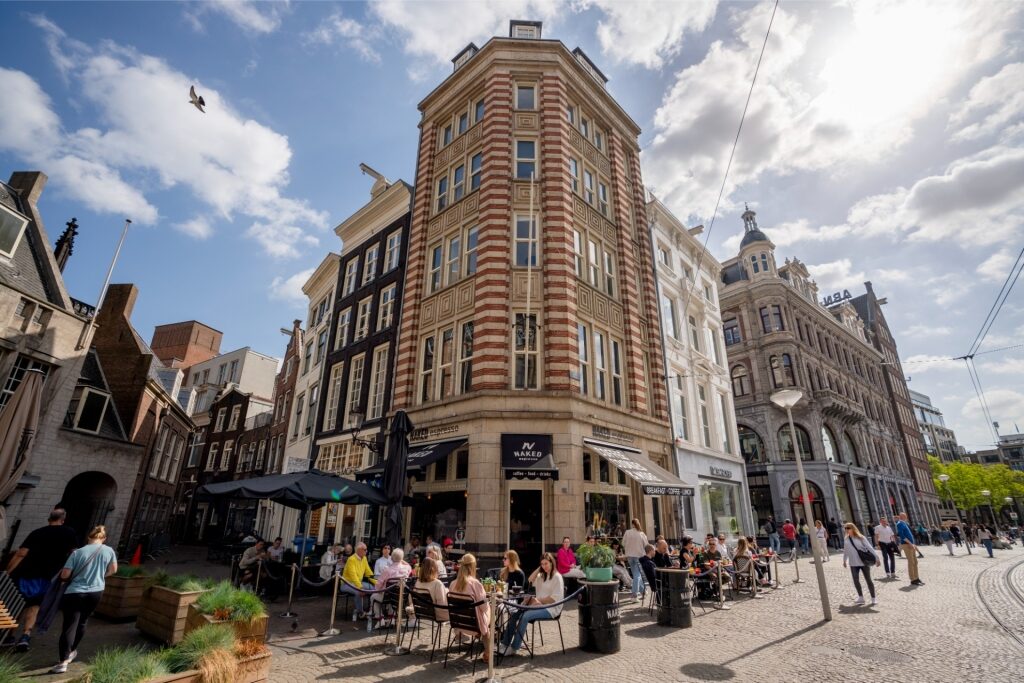
Dam Square
It would be remiss to answer the question “What is Amsterdam famous for?” without mentioning the city’s incredibly liberal attitude towards life, which is one of the many reasons it’s among the best places for solo travel in Europe.
The city is, after all, globally renowned for its progressive values, particularly when it comes to social issues such as LGBTQ+ rights and freedom of expression.
The Netherlands is a safe and accepting place for LGBTQ+ travelers to visit and Pride week in early August is a time of joyful celebration, particularly in the famous Canal Parade, when more than 80 decorated boats sail along the Prinsengracht.
Read: Three Days in Amsterdam
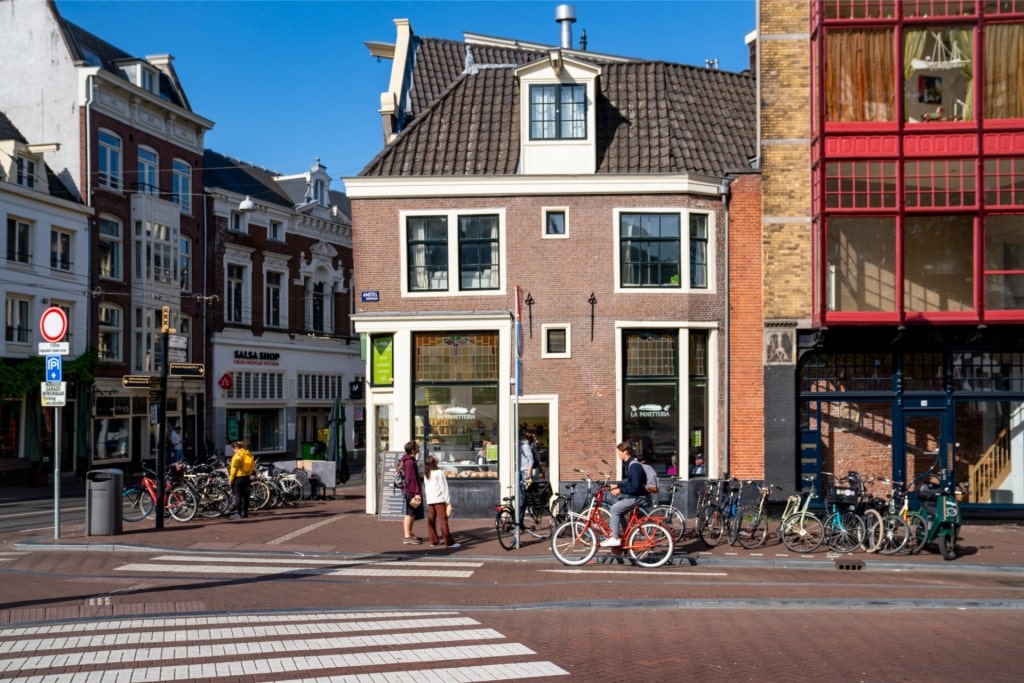
Amsterdam
Discover all this vibrant city has to offer on one of Celebrity’s cruises to Amsterdam.
